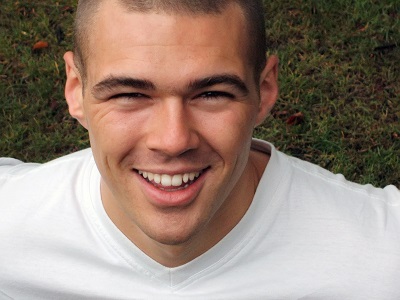- Calls to this hotline are currently being directed to Within Health, Fay or Eating Disorder Solutions
- Representatives are standing by 24/7 to help answer your questions
- All calls are confidential and HIPAA compliant
- There is no obligation or cost to call
- Eating Disorder Hope does not receive any commissions or fees dependent upon which provider you select
- Additional treatment providers are located on our directory or samhsa.gov
Fraternity Life and Body Image

Contributor: Leigh Bell, BA, writer for Eating Disorder Hope
Nerd versus frat boy. It’s at the heart of many movies from 1984 Revenge of the Nerds, in which Lewis Skolnick and Gilbert Lowe take on the Alpha Betas, to Oozma Kappa’s war with Roar Omega Roar in the 2013 Monsters University. Frat guys have long been portrayed as better-looking, stronger, and hipper — the guys other guys want be.
Many fraternity members may feel pressure to look and act a particular way, not only from their peers but from the media. Males on average reach maturity around age 16 or 17, or shortly before most begin their freshman year, making the beginning of college a sensitive time.
Dealing with Unknown Environments and People
These young men are navigating unknown environments and people, while gaining comfort in their newly matured body. So it’s no surprise college males might feel self-conscious of both their physical and internal presence, a topic not likely broached in a frat house full of guys.
Outside the frat house is a culture progressively objectifying men and focusing more on male’s specific body parts, like bare chests and backs, which are ideally wrapped in muscle1. Researchers now even apply to men the objectification theory, which has long referred to women.
Dealing with Mass Media
The theory says both in personal interactions and Western mass media, people find a sense of self in how they look and, as a result, feel like an object seen and judged on physical appearance.
 Images of attractive men, many barely dressed, are increasing in magazines and advertisements, and they’re not only showing more skin, these models are more ripped than ever. Male models lost roughly 12 pounds of fat, while gaining 27 pounds of muscle over a 25-year period, according to researchers2. The same research found models in recent Playgirl magazines had bodies that were impossible to replicate without the use of anabolic steroids.
Images of attractive men, many barely dressed, are increasing in magazines and advertisements, and they’re not only showing more skin, these models are more ripped than ever. Male models lost roughly 12 pounds of fat, while gaining 27 pounds of muscle over a 25-year period, according to researchers2. The same research found models in recent Playgirl magazines had bodies that were impossible to replicate without the use of anabolic steroids.
Reaffirming All Body Types
A college student may have coined and deemed attractive the “dad bod,” which describes the doughy look of many middle-age men, but according to American media, the ideal male is lean and chiseled, not rough around the edges.
Community Discussion – Share your thoughts here!
How can we as a community bring awareness to fraternities about the dangers of eating disorders and poor body image?
About the Author:
Leigh Bell holds a Bachelor of Arts in English with minors in Creative Writing and French from Loyola Marymount University in Los Angeles. She is a published author, journalist with 15 years of experience, and a recipient of the Rosalynn Carter Fellowship for Mental Health Journalism. Leigh is recovered from a near-fatal, decade-long battle with anorexia and the mother of three young, rambunctious children.
References:
- Dakanalis, A., Timko, C.A., Favagrossa, L., Riva, G., Zanetti M.A., & Clerici, M. (2014). Why do only a minority of men report severe levels of eating disorder symptomatology, when so many report substantial body dissatisfaction? Examination of exacerbating factors. Eating Disorders: The Journal of Treatment & Prevention, 22(4), 292-305.
- Pope, H., Phillips, K., & Olivardia, R. (2002). The Adonis complex: How to identify, treat, and prevent body obsession in men and boys. New York, NY: Touchstone.
Last Updated & Reviewed By: Jacquelyn Ekern, MS, LPC on June 19th, 2015
Published on EatingDisorderHope.com

The EatingDisorderHope.com editorial team comprises experienced writers, editors, and medical reviewers specializing in eating disorders, treatment, and mental and behavioral health.

